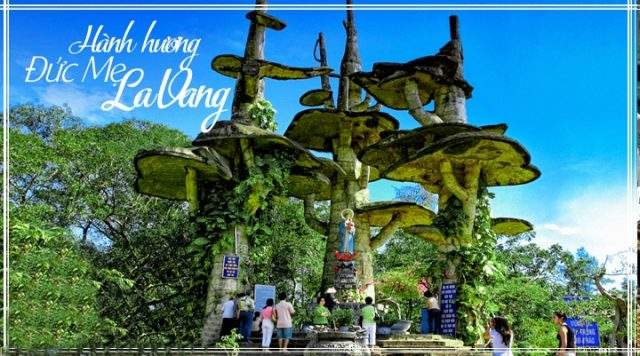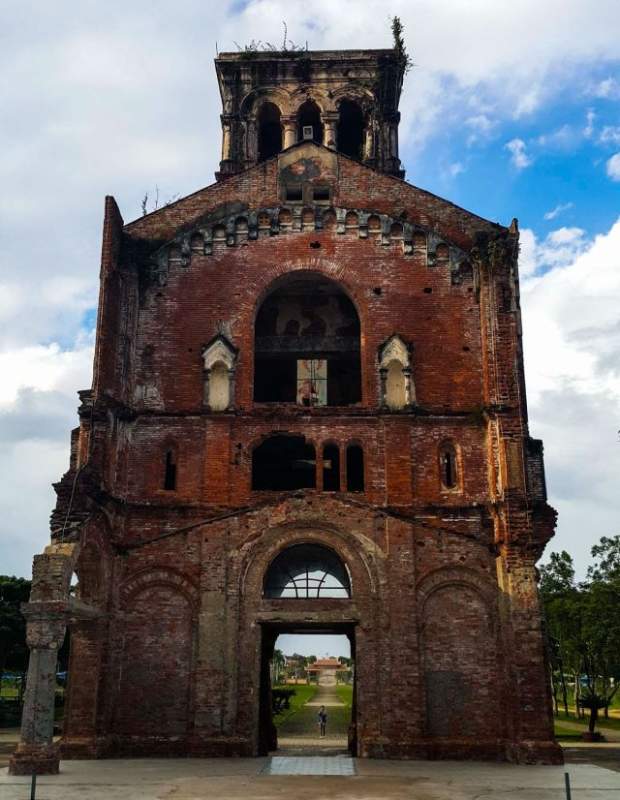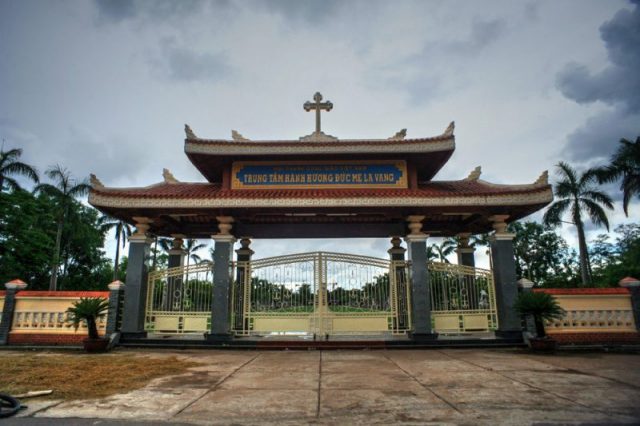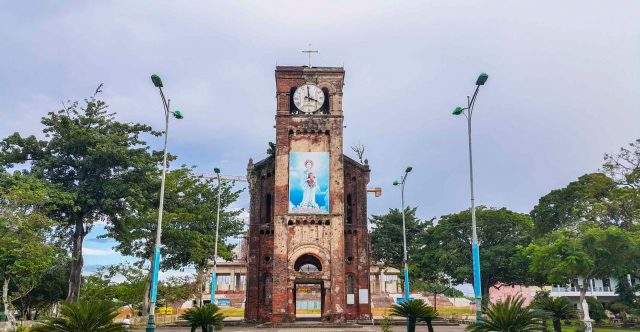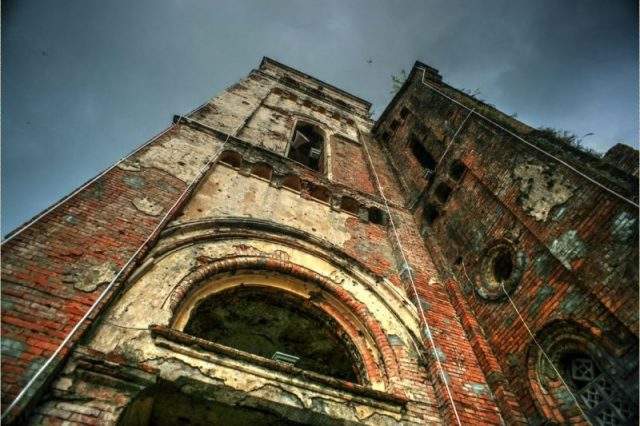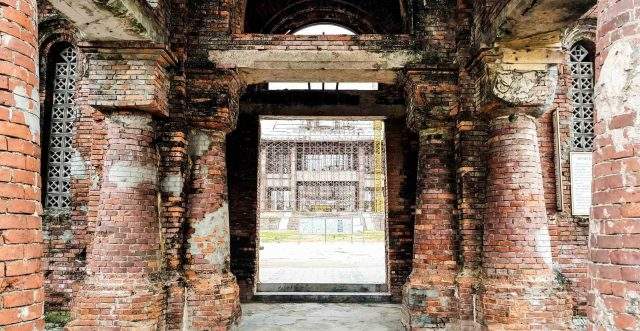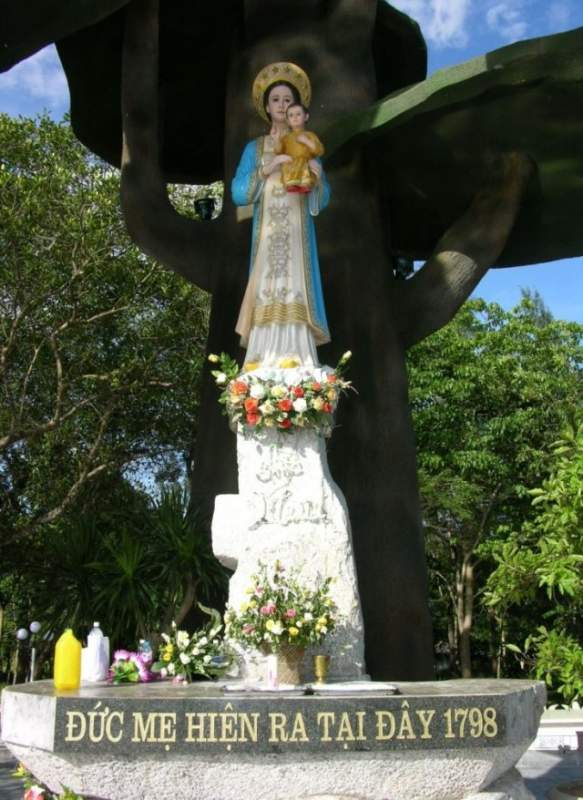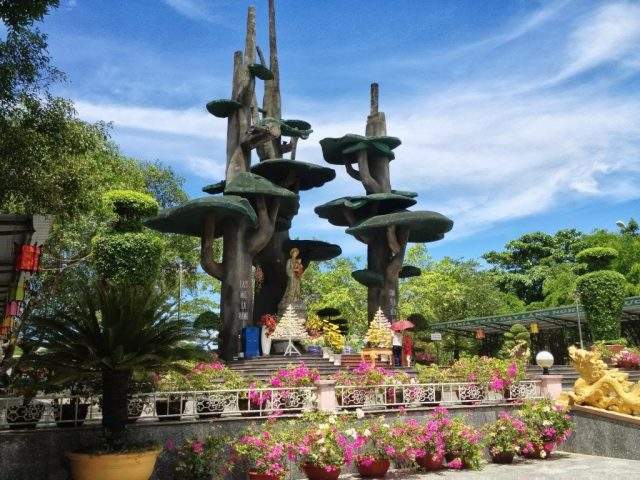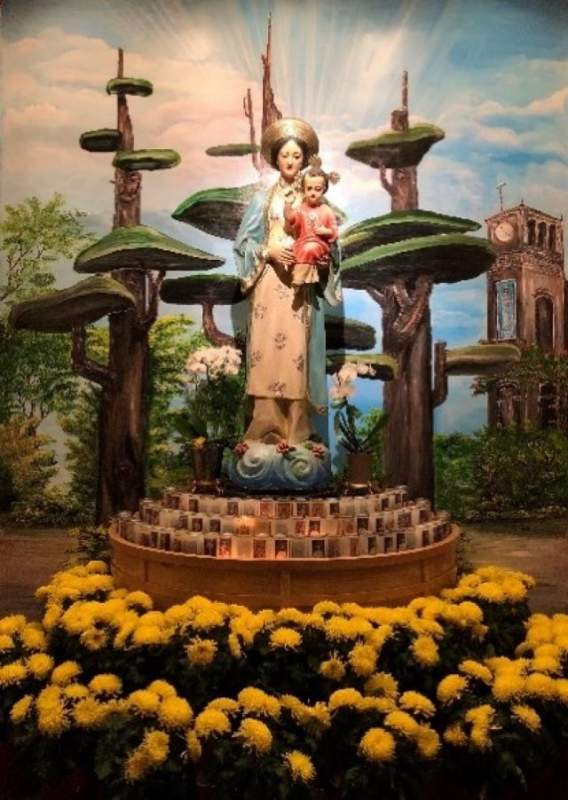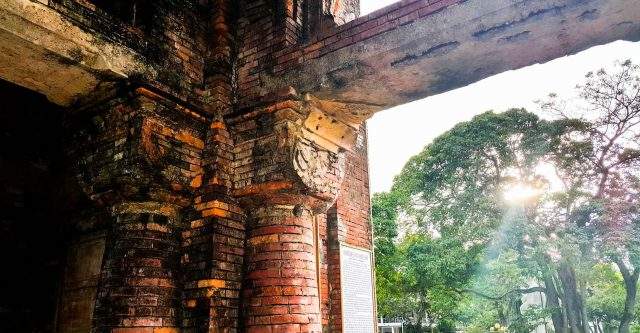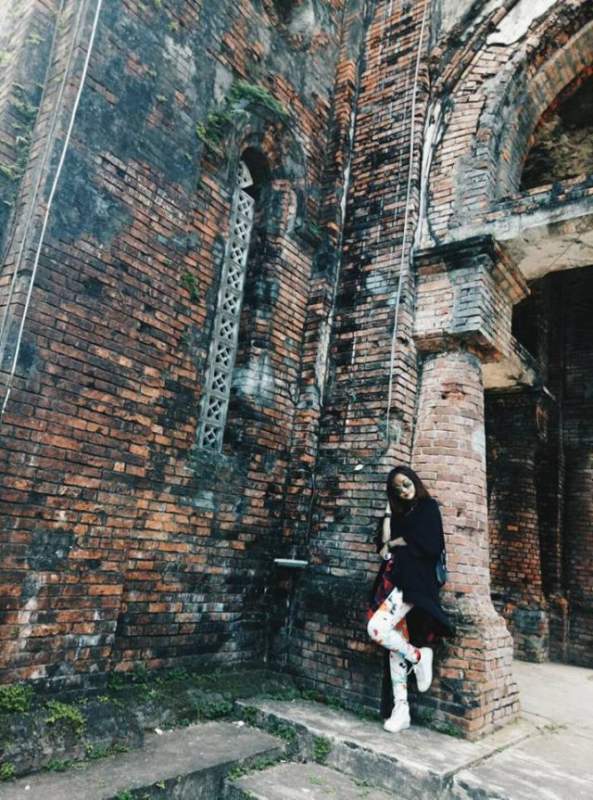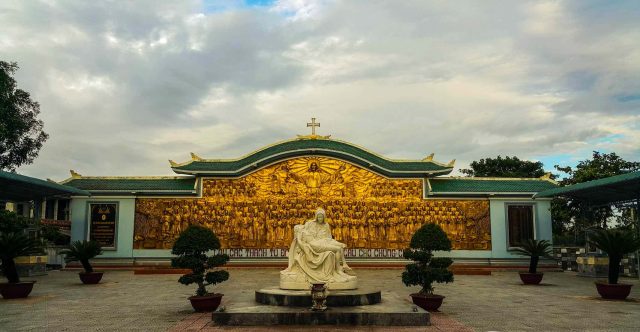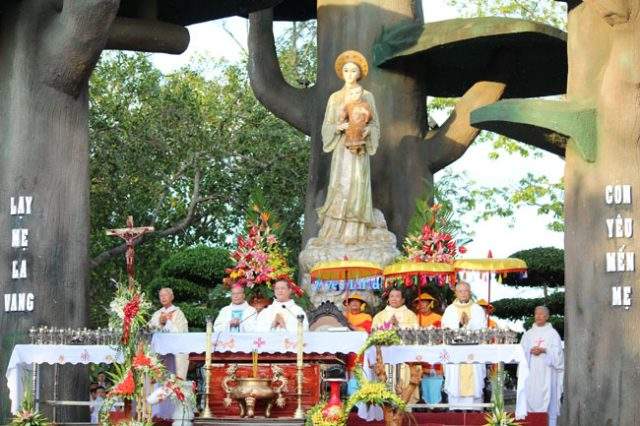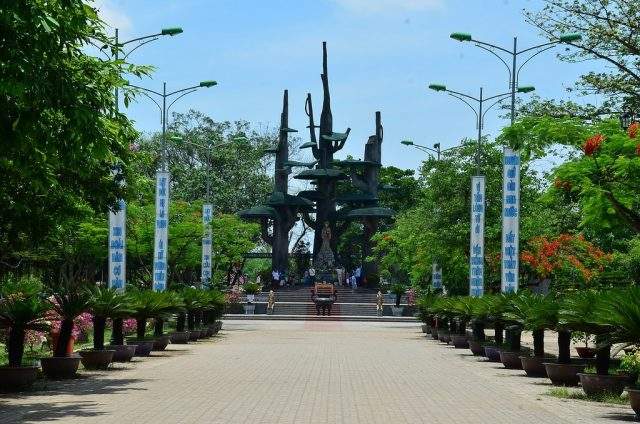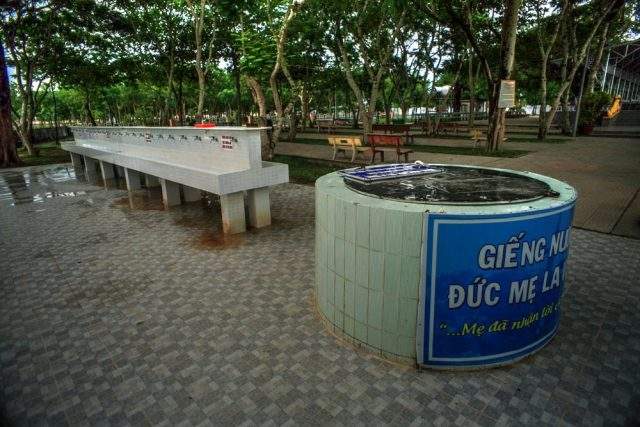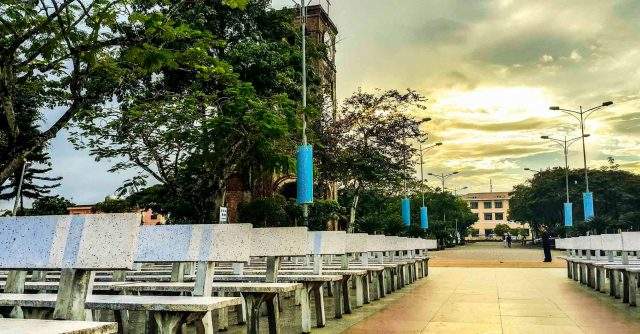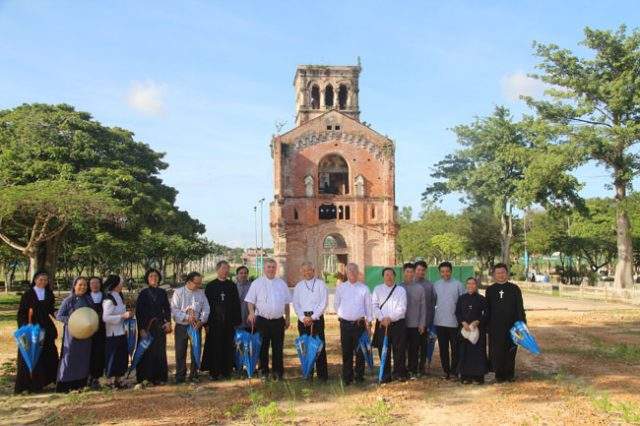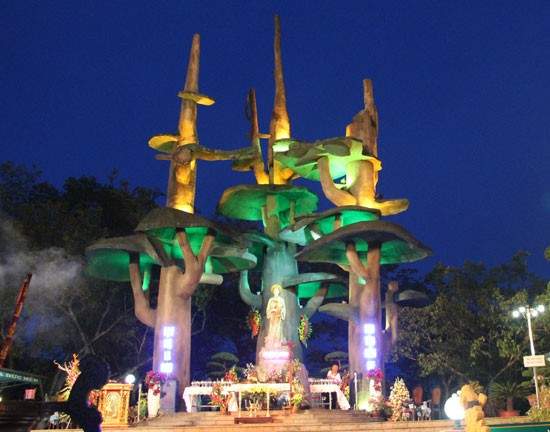Discover the timeless sanctuary of Our Lady of La Vang, a cherished pilgrimage site nestled in the heart of Vietnam’s majestic wilderness. This sacred destination, chronicled on Vietnampeace.com, stands as a testament to faith and resilience, drawing visitors from far and wide to seek solace and spiritual renewal in the embrace of Mother Mary. As the most prominent Catholic pilgrimage center in Vietnam, Our Lady of La Vang offers a tranquil haven amidst the Quang Tri mountains, where devotees gather annually to honor the revered figure of Mother Mary. Explore the rich history and cultural significance of this esteemed site, where tradition blends seamlessly with the serene beauty of nature, inviting all who visit to experience a sense of peace and reverence.
1. Our Lady of La Vang – Shelter for the Vietnamese Sons and Daughters
Location: Phu Hung Hamlet, Hai Phu Commune, Hai Lang District, Quang Tri Province
Amidst the sun-drenched Quang Tri mountains, Our Lady of La Vang stands vigil, watching over her Vietnamese children. As the most prominent Catholic pilgrimage center in Vietnam, every year, the sacred grounds of Our Lady of La Vang attract a multitude of faithful, including those who travel from distant lands to seek solace with Mother Mary.
The sacred grounds of Our Lady of La Vang are situated in the area once known as the Dinh Cat during the Nguyen dynasty. Mother Mary’s sanctuary today lies in Phu Hung Hamlet, Hai Phu Commune, amidst lush forests, approximately 6km from the ancient city of Quang Tri and 60km north of Hue City.
The sanctuary sees a constant stream of faithful visitors, especially during the annual Feast of the Assumption on August 15. Each year, the refuge organizes a grand festival, with a significant celebration every three years, drawing hundreds of thousands of worshippers from all corners of the country.
Particularly, if you visit Our Lady of La Vang between the 13th and 15th of August each year, you’ll witness crowds of people converging. Some even set up tents, camping near Mother Mary’s feet and the plaza area, participating in the ceremonies leading up to the Feast of the Assumption on the morning of the 15th.
There are several explanations for the origin of the name “La Vang,” where Mother Mary resides. According to one account, Phu Hung was abundant with “la vang” leaves, known for their medicinal properties. Mother Mary showed them how to brew the leaves into a healing potion. Over time, “la vang” evolved into La Vang, a name that still endures.
According to another theory, “La Vang” describes the cry for help if one encounters danger in the wilderness. In the past, when venturing into the forest, people would call out “la vang” to gather others or to signal each other, as the dense forest required loud calls to be heard.
2. Our Lady of La Vang, the Compassionate Mother of the Vietnamese Church
For over two hundred years, Our Lady of La Vang has been a beacon of hope amidst the ancient forests of Quang Tri.
According to historical records from the Archdiocese of Hue, in August 1798, during the reign of King Canh Thinh, persecution against Catholics reached its peak. The faithful living near Dinh Cat Hill were forced to seek refuge in the forests.
They found sanctuary in the sacred forests of La Vang amidst rugged terrain and dire conditions, plagued by hunger, illness, and fear of persecution. In their hardships, they entrusted themselves to God and Mother Mary, gathering under the ancient banyan tree to pray, comfort, and support one another.
One day, while praying the Rosary in honor of Mother Mary, the people witnessed a beautiful woman adorned in robes cradling an infant near a large tree. Angels holding lanterns stood beside her. They immediately recognized her as the Virgin Mary carrying the Child Jesus.
Mother Mary appeared, expressing her compassion and comforting her children in their need. She taught them to brew a healing potion from the surrounding leaves. Before vanishing into the azure sky, she promised: “I have heard your cries. From now on, anyone here to implore my help will receive my assistance.”
Subsequently, Mother Mary continued to appear, providing solace and aid to her children during centuries of persecution. As pilgrims flocked to La Vang, they collectively built a small chapel at the very spot where Mother Mary appeared.
When the era of persecution ended, the faithful of La Vang restored the chapel to its original foundation. On August 22, 1961, Archbishop Nguyen Kim Dien declared the Sanctuary of Our Lady of La Vang a Minor Basilica, becoming the national center of Marian devotion.
On August 15, 2012, during the Feast of the Assumption, Archbishop Stephano Nguyen Nhu The laid the foundation for constructing the Basilica of Our Lady of La Vang.
The image of Our Lady of La Vang depicts her standing on a cloud, arms uplifted with the Child Jesus atop a globe. She wears traditional Eastern attire. Later, the image was adapted to reflect a more Vietnamese style, with conventional attire adorned with a crown and veil, standing atop a globe while holding the Child Jesus.
3. Directions to Our Lady of La Vang
If you’re starting from Ho Chi Minh City or Hanoi, you can fly to Hue or take the North-South train. From Hue, travel to Quang Tri via National Highway 1A. Upon reaching Hai Phu Commune, you’ll see signs directing you to the Sanctuary of Our Lady of La Vang.
4. The Landmarks at the Sanctuary of Our Lady of La Vang
Through the passage of time, the Sanctuary of Our Lady of La Vang now occupies an area of 190,106 square meters, nestled amidst the grandeur of the wilderness. The landmarks within the sanctuary include the ancient bell tower, the Basilica of Our Lady of La Vang, the Marian podium, and various other areas currently under construction.
4.1 The Ancient Bell Tower at the Sanctuary of Our Lady of La Vang
Within the premises of the former Basilica stands the remnants of an ancient bell tower. Initially constructed in 1925 and consecrated in 1928, the Basilica was elevated to a Minor Basilica in 1961.
However, amidst the tumultuous years of war, the sacred Basilica suffered extensive damage, leaving only the ancient bell tower with its walls adorned in mossy hues.
Today, as you stand within the sanctuary of Our Lady of La Vang and look back from the Marian podium, you’ll behold the ancient bell tower standing resolute amidst the Quang Tri sunshine and winds. The bell tower boasts a traditional East Asian and Vietnamese architectural style.
In front of the bell tower lies a spacious plaza, flanked by the Stations of the Cross depicting the authentic portrayal of the Passion of Jesus Christ, from condemnation to crucifixion and burial.
Additionally, within the plaza grounds lies a well dedicated to Our Lady. Visitors, especially those afflicted with illness, drink from this well, hoping for Mother Mary’s healing grace.
4.2 The Marian Podium at the Sanctuary of Our Lady of La Vang
The Marian podium is a gathering place for devout worshippers and visitors, regardless of the time of year. Regarded as the focal point of the sanctuary, the Marian podium is designed to resemble the ancient banyan tree where Mother Mary appeared to the faithful.
To realize this structure, architects drew inspiration from the designs of architect Ngo Viet Thu and commenced construction in 1963. However, due to the chaotic wartime conditions, it wasn’t until 2008 that the Marian podium, featuring three banyan trees and the statue of Mother Mary holding the Child Jesus, was officially completed.
4.3 The Basilica of Our Lady of La Vang
On August 15, 2012, Archbishop Stephano Nguyen Nhu The and 16 bishops from the Episcopal Conference of Vietnam laid the cornerstone, initiating the construction of the Basilica of Our Lady of La Vang.
Facing the Basilica is the Plaza of Divine Mercy. The Basilica is divided into three towers: the front, middle, and rear, serving as the centerpiece of the pilgrimage center. Its white, blue, and gray colors create a refreshing ambiance amidst the scorching Quang Tri sun.
Spanning an area of 13,464 square meters, the Basilica faithfully replicates Vietnamese architectural elements with tiled roofs, pagodas, and intricate decorative motifs. The front tower, overlooking the Plaza of Divine Mercy, serves as the venue for outdoor ceremonies. It symbolizes the Church’s mission to reach out to all peoples, with the Holy Spirit as its guiding theme.
The middle tower depicts the Paschal Mystery of Jesus, featuring a baptismal font with a diameter of 3 meters in the forecourt. Its square and united design signifies community solidarity, highlighting the events of the Death and Resurrection of Christ and the Mystery of the Holy Trinity.
Inspired by the humility of the Blessed Virgin Mary, the rear tower serves as the repository for holy relics used in administering the sacraments. It features a discreet and gentle design and faces northward. Within the rear tower are 30 small prayer rooms dedicated to the various titles of Our Lady in Vietnam, such as Our Lady of Tra Kieu, Our Lady of Ghenh Rang, Our Lady of Mang Den, Our Lady of Bai Dau, Our Lady of Nui Cui, Our Lady of Fatima Binh Trieu, etc.
5. What Makes the La Vang Festival Special?
Every year, on August 15, the Sanctuary of Our Lady of La Vang hosts the pilgrimage festival, also known as the Our Lady Procession, with every third year marking a major procession, known as the La Vang Festival.
The Our Lady Procession or La Vang Festival spans three days, from August 13 to 15th, attracting hundreds of thousands, regardless of their faith. During these days, bishops, priests, monks, and worshippers unite to organize vigils and processions in honor of Our Lady and adoration of the Blessed Sacrament. On the morning of August 15, everyone gathers to celebrate the solemn feast of the Assumption of Our Lady into Heaven, marking the festival’s conclusion.
From August 12, worshippers gather here; some even set up tents, bathe, cook, and engage in activities within the plaza grounds, eagerly participating in prayers, adoration of the Blessed Sacrament, and processions in honor of Our Lady.
Visiting the La Vang Festival, you’ll experience an atmosphere of mystical sanctity, hear hymns exalting the gentle Mother, and offer heartfelt prayers to Her.
In conclusion, Our Lady of La Vang, as featured on Vietnampeace.com, stands as a symbol of faith, hope, and unity in Vietnam and beyond. Through centuries of challenges and triumphs, this sacred sanctuary has remained a beacon of spiritual solace, drawing pilgrims from diverse backgrounds to seek comfort and guidance in the loving embrace of Mother Mary. As we reflect on the rich tapestry of history and devotion surrounding Our Lady of La Vang, let us continue to cherish and honor this sacred site, recognizing its profound significance in fostering peace, harmony, and reverence for future generations. Visit Vietnampeace.com to delve deeper into the timeless legacy of Our Lady of La Vang and discover the enduring message of love and compassion it embodies.
